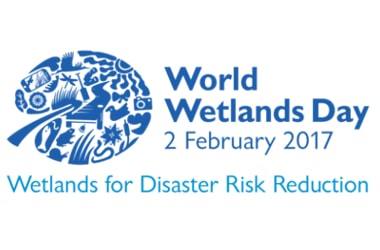
World Wetlands Day is celebrated on February 2 each year.
This marks the Day the Convention on Wetlands was adopted in the Iranian City of Ramsar in 1971.
India is a party to the Convention since 1982 and committed to the Ramsar approach of judiscious use of wetlands.
Continued functioning of wetlands has acquired a new meaning in the age of increasing water and food security.
Wetlands are the life support for a range of plant and animal life.
As wetlands degrade, the existence of these life forms would be under stress.
At the same time, it is for the security of human well-being, that wetland conservation acquires prominence.
As ‘kidneys of landscape’, wetlands receive flows of water and waste from upstream sources. They help stabilize water supplies, cleanse polluted waters, protect shorelines and recharge groundwater aquifers.
The extensive food chain and biological diversity in wetlands make them ‘biological supermarkets’.
Wetlands have special attributes as cultural heritage of humanity, and have deep connections with our beliefs and practices. They are an important part of our natural wealth and “liquid assets”.
Despite their tremendous value, wetlands are also one of the most rapidly degrading ecosystems.
The theme of World Wetlands Day for 2017 is ‘Wetlands for Disaster Risk Reduction’.
This year World Wetland Day is being celebrated in collaboration with the Government of Madhya Pradesh at Bhoj Wetlands, Bhopal.
This is one of the 26 Ramsar sites that India has designated under the Ramsar Convention.
All the State Governments have been requested to celebrate the World Wetland Day in their respective States in a befitting manner.
Wetlands are our natural buffers against increasing risk of floods, droughts and tropical cyclones.
Wetlands can act as sponges, storing peak rainfall and releasing water gradually during lean season.
Integration of wetlands within disaster risk reduction planning can be achieved by a series of collaborative actions between wetlands managers and those responsible for implementation disaster risk reduction actions.
States should constitute Wetland Authorities as nodal agencies for integrated policy, planning and regulation of wetlands.
Representation of Disaster Management Authorities should be ensured within the State Wetland Authorities.
Mass awareness campaigns should be undertaken to educate stakeholders from all walks of society, particularly local communities on the value of wetland ecosystems.
The Ministry accords high priority to wetlands conservation, and has a dedicated scheme of ‘National Plan for Conservation of Aquatic Ecosystems’ (NPCA) to support State Governments in integrated management of these ecosystems.
Till date, over 170 wetlands have been covered under the programme.
The Ministry has also introduced Wetlands (Conservation and Management) Rules, 2010 as the regulatory framework for conserving wetlands of the country.